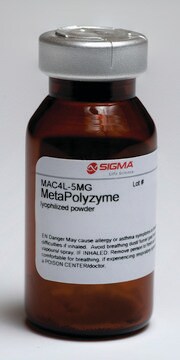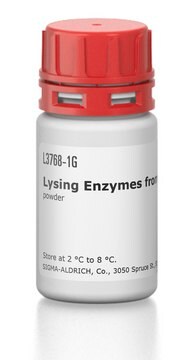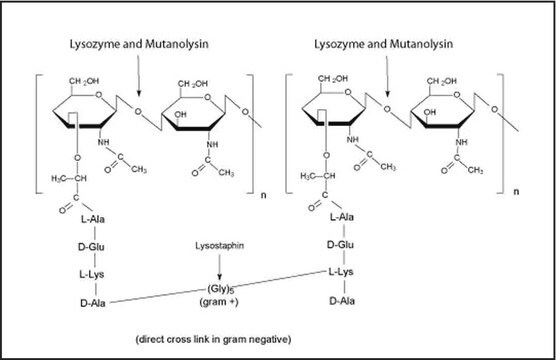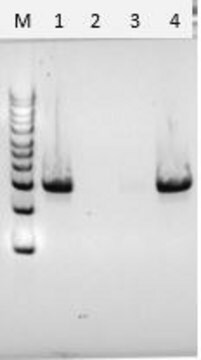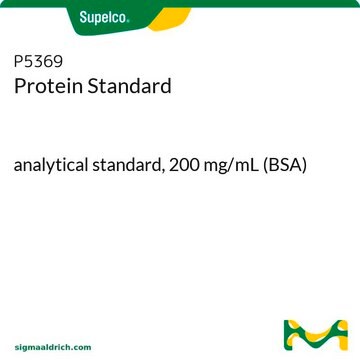SAE0200
MycoPolyzyme
for use with yeast and fungal lysis, free of DNA contaminants, suitable for Microbiome research
Se connecterpour consulter vos tarifs contractuels et ceux de votre entreprise/organisme
About This Item
Code UNSPSC :
12352204
Nomenclature NACRES :
NA.77
Produits recommandés
Niveau de qualité
Forme
lyophilized powder
Caractéristiques
DNA free
Conditions d'expédition
wet ice
Température de stockage
−20°C
Description générale
Lytic Enzyme Mixture is a mix of two enzymes: lyticase and chitinase, which have been proven useful in fungal and yeast lysis for microbiome studies. Lyticase is preferred to digest cell walls of yeast and generate spheroplasts from fungi for transformation. Chitinases have been detected in many microorganisms and in plants. In fungi, chitinases assist in morphogenesis, to break down the inherent chitin content of fungal cell walls. Plant chitinases help in resistance to fungal attack and counteracting fungal growth, by targeting those same fungal cell walls. In bacteria, bacterial chitinases assist in utilizing chitin as a carbon source and as an energy source. The mixture of the two enzymes has also been tested to ensure absence of microbial DNA.
Application
The study of microbial communities has been revolutionized in recent years by the widespread adoption of culture independent analytical techniques such as 16S rRNA gene sequencing and metagenomics. Since DNA contamination during sample preparation is a major problem of these sequence-based approaches, DNA extraction reagents free of DNA contaminants are essential. Lytic Enzyme Mixture undergoes strict quality control testing to ensure the absence of detectable levels of contaminating microbial DNA using 35 cycles PCR amplification of 16S and 18S rDNA using universal primer sets.
Composants
The enzymes in Lytic Enzyme Mixture are:
The enzymes are tested for absence of contaminating microbial DNA using 16S and 18S PCR amplification.
- Lyticase
- Chitinase
The enzymes are tested for absence of contaminating microbial DNA using 16S and 18S PCR amplification.
Mention d'avertissement
Danger
Mentions de danger
Conseils de prudence
Classification des risques
Resp. Sens. 1
Code de la classe de stockage
11 - Combustible Solids
Classe de danger pour l'eau (WGK)
WGK 3
Faites votre choix parmi les versions les plus récentes :
Certificats d'analyse (COA)
Lot/Batch Number
Désolés, nous n'avons pas de COA pour ce produit disponible en ligne pour le moment.
Si vous avez besoin d'assistance, veuillez contacter Service Clients
Déjà en possession de ce produit ?
Retrouvez la documentation relative aux produits que vous avez récemment achetés dans la Bibliothèque de documents.
Notre équipe de scientifiques dispose d'une expérience dans tous les secteurs de la recherche, notamment en sciences de la vie, science des matériaux, synthèse chimique, chromatographie, analyse et dans de nombreux autres domaines..
Contacter notre Service technique